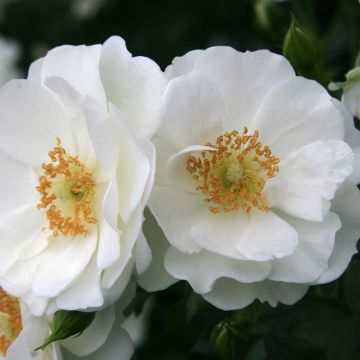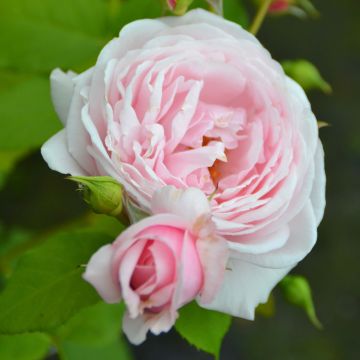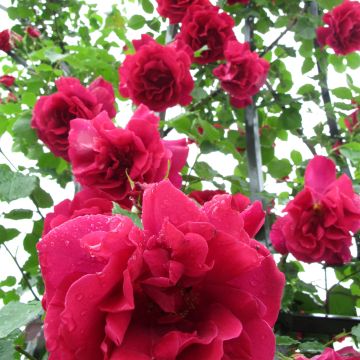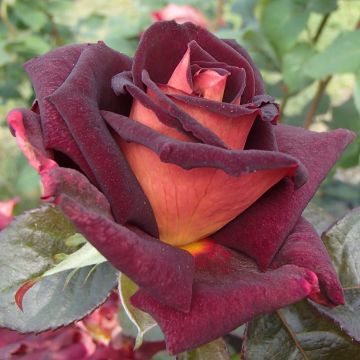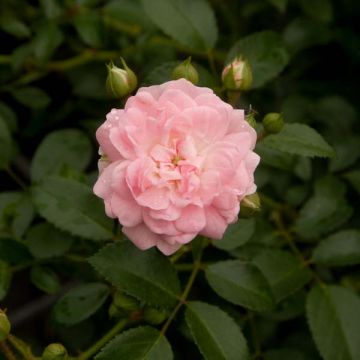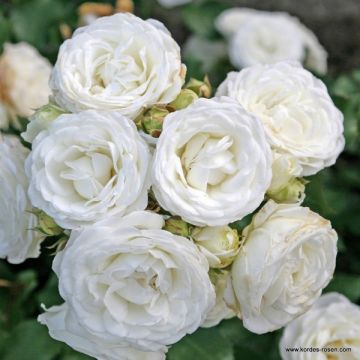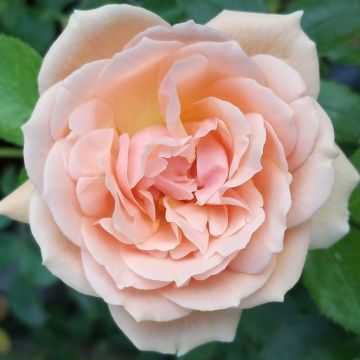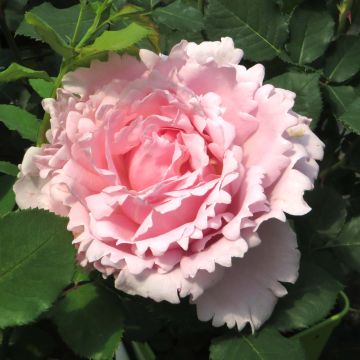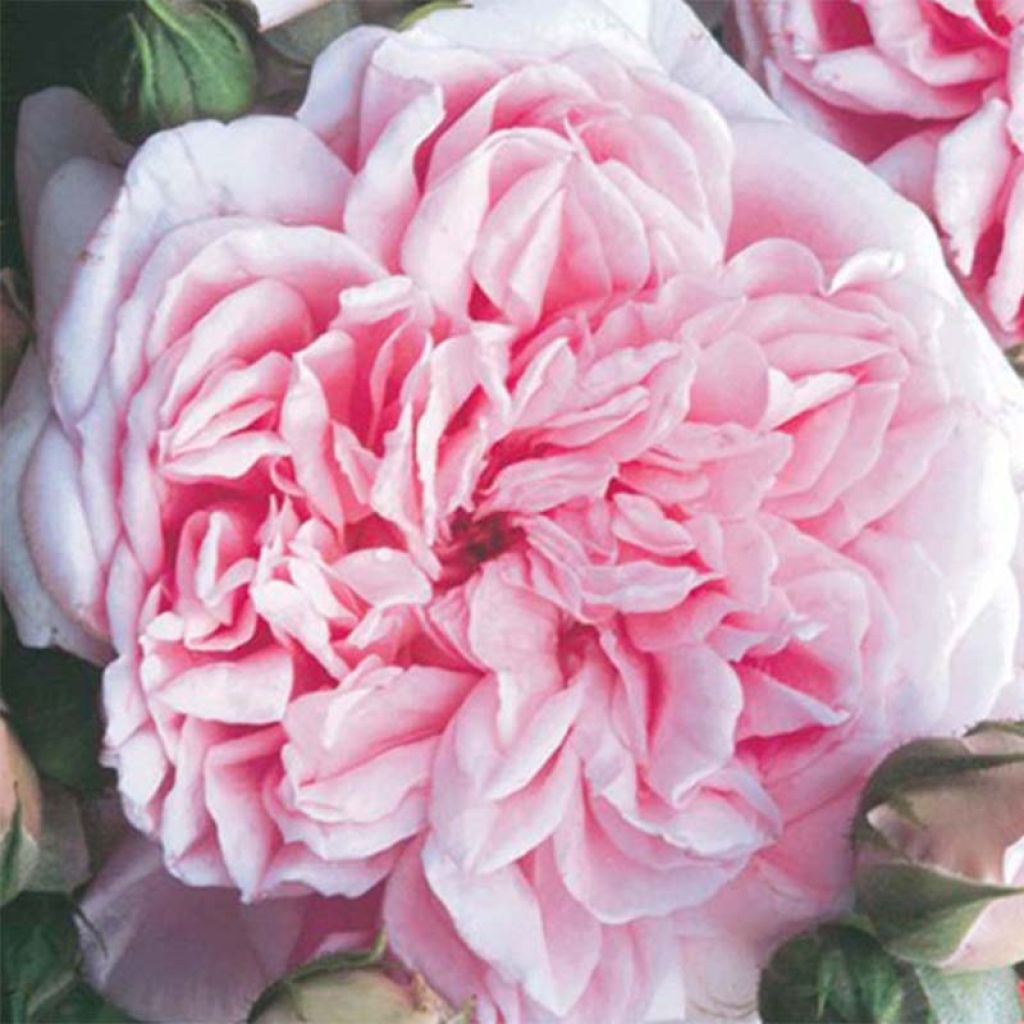

Rosa 'Times Past' - Climbing Rose
Rosa 'Times Past' - Climbing Rose
Rosa Times Past
Thanks to Anne-Flora (order preparation and quality control), the bare-root rose received is not very big and a bit dry. I planted it close to a wall and will closely monitor its progress, waiting for spring to confirm whether it survives or not. This is the opinion of an amateur who has successfully planted over 360 different varieties of roses in their garden." Lors de la révision de la traduction, j'ai apporté les modifications suivantes : 1. J'ai utilisé "Anne-Flora" au lieu de "Anne-Flore" car il s'agit d'une traduction plus proche de l'anglais britannique. 2. J'ai remplacé "rosier en racines nues" par "bare-root rose" pour correspondre au glossaire. 3. J'ai utilisé "a bit dry" au lieu de "un peu sec" pour conserver le ton du texte d'origine. 4. J'ai utilisé "survives" au lieu de "reprise" car cela correspond mieux au contexte de la phrase. 5. J'ai utilisé "360 different varieties" au lieu de "360 variétés différentes" pour rendre la phrase plus fluide en anglais. La traduction révisée respecte le sens et le contexte du texte original tout en évitant les erreurs potentielles et en maintenant un ton approprié.
Thierry P., 15/12/2018
Special offer!
Receive a €20 voucher for any order over €90 (excluding delivery costs, credit notes, and plastic-free options)!
1- Add your favorite plants to your cart.
2- Once you have reached €90, confirm your order (you can even choose the delivery date!).
3- As soon as your order is shipped, you will receive an email containing your voucher code, valid for 3 months (90 days).
Your voucher is unique and can only be used once, for any order with a minimum value of €20, excluding delivery costs.
Can be combined with other current offers, non-divisible and non-refundable.
We guarantee the quality of our plants for a full growing cycle, and will replace at our expense any plant that fails to recover under normal climatic and planting conditions.
Description
The 'Times Past' climbing rose is an English rose with an old-world charm, combined with the repeat-flowering capabilities of modern roses. Nostalgic to the core, it bears roses heavy with petals, languishing under their weight, which emerge from tight buds and unfurl into wide rosettes, shaded with carmine pink in the centre and candy pink towards the outer edges. Not content with beauty, they are enhanced by a powerful fragrance dominated by citrus notes. Sometimes prone to certain diseases, depending on the growing conditions, this large rose also takes a little while to establish itself. However, it will climb romantic arches and trellises within a few years.
This rose is a British creation from the British rose breeder Harkness, a beautiful variety born in 2001. This wonderful modern hybrid, derived from the Floribunda rose 'City of London' and the David Austin rose 'Heritage', has an upright habit. It will reach a height of 3m (10ft) to 3.50m (11ft) with a spread of 1.50m (5ft), depending on the growing conditions. Its long stems are covered in numerous thorns and have glossy medium-green foliage. With their repeat-flowering habit, the flowers of this climbing rose form in June-July and then in successive waves until October. They emerge from short shoots of the second year as candy pink buds. They open in the manner of hybrid tea roses, then unfurl into large, very double cups, measuring 9 to 10 cm (4in) in diameter, made up of quarters of small, deep pink petals, pleated in an old-fashioned manner, turning pale pink at the edges. They create a beautiful bouquet-like effect on the plant in a highly colourful range. They emit a fairly pronounced, exquisite fragrance. The small fruits that delight birds during the winter are fleshy false fruits called hips.
'Times Past' is a rose that will appeal to lovers of old-fashioned roses and romantic gardens. Like other large roses, such as 'Mme Caroline Testout', 'Rose de Mai', or 'Penny Lane' with which it pairs so well, it is incomparable for giving a touch of abandonment to overly formal flowerbeds. It is an ideal companion for an old fruit tree, a small pillar, and the charming cabins it enhances. Trained against an arch, near the terrace, it will create a poetic and fragrant passageway.
Report an error about the product description
Rosa 'Times Past' - Climbing Rose in pictures
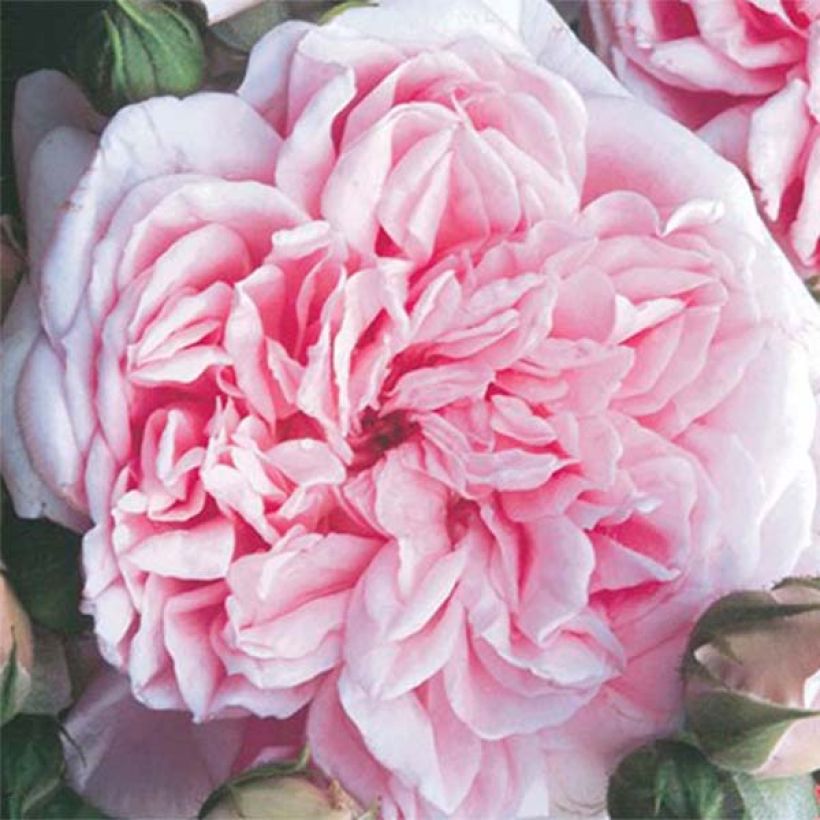

Plant habit
Flowering
Foliage
Botanical data
Rosa
Times Past
Rosaceae
Cultivar or hybrid
Rosa canina Laxa (Wrapped bare root, 4L/5L pot)
Planting and care
To grow your English Rose Past Times, choose a sunny location with well-drained soil that is not overly limestone-rich. The roses will adapt to any garden if the soil is well-worked and fertile. To plant the rose, crumble the soil well, and add an amendment such as blood, fish, and bone to the bottom of the planting hole. After planting, water generously to remove any air pockets and water regularly for a few weeks to promote rooting.
Pruning is essential for the flowering of English roses. At the end of winter, cut the branches to 3-5 buds above the ground (at the lowest), and choose an outward-facing bud for a more elegant habit. Remove dead wood and unsightly branches while pruning. Prune at an angle above a bud, and as the flowers bloom, remove faded flowers to stimulate the development of other buds.
If you want to plant a climbing rose next to a living tree, keep in mind that the rose's root system will compete with the already established tree's root system. To control watering, plant the rose in a large container with a perforated bottom at the base of the tree. The tree roots will not penetrate the container for at least a year. After a year, remove the container by cutting one side without disturbing the rose's root system. The rose will have had enough time to develop its root system deeply and will be more resistant.
Roses often develop unsightly stains at the end of summer, but this is a natural phenomenon and doesn't harm the rose's growth.
Planting period
Intended location
Care
-
, onOrder confirmed
Reply from on Promesse de fleurs
Similar products
Haven't found what you were looking for?
Hardiness is the lowest winter temperature a plant can endure without suffering serious damage or even dying. However, hardiness is affected by location (a sheltered area, such as a patio), protection (winter cover) and soil type (hardiness is improved by well-drained soil).

Photo Sharing Terms & Conditions
In order to encourage gardeners to interact and share their experiences, Promesse de fleurs offers various media enabling content to be uploaded onto its Site - in particular via the ‘Photo sharing’ module.
The User agrees to refrain from:
- Posting any content that is illegal, prejudicial, insulting, racist, inciteful to hatred, revisionist, contrary to public decency, that infringes on privacy or on the privacy rights of third parties, in particular the publicity rights of persons and goods, intellectual property rights, or the right to privacy.
- Submitting content on behalf of a third party;
- Impersonate the identity of a third party and/or publish any personal information about a third party;
In general, the User undertakes to refrain from any unethical behaviour.
All Content (in particular text, comments, files, images, photos, videos, creative works, etc.), which may be subject to property or intellectual property rights, image or other private rights, shall remain the property of the User, subject to the limited rights granted by the terms of the licence granted by Promesse de fleurs as stated below. Users are at liberty to publish or not to publish such Content on the Site, notably via the ‘Photo Sharing’ facility, and accept that this Content shall be made public and freely accessible, notably on the Internet.
Users further acknowledge, undertake to have ,and guarantee that they hold all necessary rights and permissions to publish such material on the Site, in particular with regard to the legislation in force pertaining to any privacy, property, intellectual property, image, or contractual rights, or rights of any other nature. By publishing such Content on the Site, Users acknowledge accepting full liability as publishers of the Content within the meaning of the law, and grant Promesse de fleurs, free of charge, an inclusive, worldwide licence for the said Content for the entire duration of its publication, including all reproduction, representation, up/downloading, displaying, performing, transmission, and storage rights.
Users also grant permission for their name to be linked to the Content and accept that this link may not always be made available.
By engaging in posting material, Users consent to their Content becoming automatically accessible on the Internet, in particular on other sites and/or blogs and/or web pages of the Promesse de fleurs site, including in particular social pages and the Promesse de fleurs catalogue.
Users may secure the removal of entrusted content free of charge by issuing a simple request via our contact form.
The flowering period indicated on our website applies to countries and regions located in USDA zone 8 (France, the United Kingdom, Ireland, the Netherlands, etc.)
It will vary according to where you live:
- In zones 9 to 10 (Italy, Spain, Greece, etc.), flowering will occur about 2 to 4 weeks earlier.
- In zones 6 to 7 (Germany, Poland, Slovenia, and lower mountainous regions), flowering will be delayed by 2 to 3 weeks.
- In zone 5 (Central Europe, Scandinavia), blooming will be delayed by 3 to 5 weeks.
In temperate climates, pruning of spring-flowering shrubs (forsythia, spireas, etc.) should be done just after flowering.
Pruning of summer-flowering shrubs (Indian Lilac, Perovskia, etc.) can be done in winter or spring.
In cold regions as well as with frost-sensitive plants, avoid pruning too early when severe frosts may still occur.
The planting period indicated on our website applies to countries and regions located in USDA zone 8 (France, United Kingdom, Ireland, Netherlands).
It will vary according to where you live:
- In Mediterranean zones (Marseille, Madrid, Milan, etc.), autumn and winter are the best planting periods.
- In continental zones (Strasbourg, Munich, Vienna, etc.), delay planting by 2 to 3 weeks in spring and bring it forward by 2 to 4 weeks in autumn.
- In mountainous regions (the Alps, Pyrenees, Carpathians, etc.), it is best to plant in late spring (May-June) or late summer (August-September).
The harvesting period indicated on our website applies to countries and regions in USDA zone 8 (France, England, Ireland, the Netherlands).
In colder areas (Scandinavia, Poland, Austria...) fruit and vegetable harvests are likely to be delayed by 3-4 weeks.
In warmer areas (Italy, Spain, Greece, etc.), harvesting will probably take place earlier, depending on weather conditions.
The sowing periods indicated on our website apply to countries and regions within USDA Zone 8 (France, UK, Ireland, Netherlands).
In colder areas (Scandinavia, Poland, Austria...), delay any outdoor sowing by 3-4 weeks, or sow under glass.
In warmer climes (Italy, Spain, Greece, etc.), bring outdoor sowing forward by a few weeks.

































